4:50 P.M. on Friday, March 24th, 2023
Despite being less than two miles away at the Shillington Farmers Market when the explosion occurred; I felt and heard nothing. It wasn’t until I got home after 5:00 that I found out the way I assume the majority of you did; from social media. Particularly an update at the top of my Facebook feed which was trending from Fire Alerts of Berks County.
I immediately took to google maps and punched in the address provided by that post, dropped into street view and observed the structure. My first observation was that those buildings were very old.
The first 24 hours were chaotic as it related to the spread of images and information on social media. I can’t even imagine what navigating that was like for current employees or loved ones of employees.
In the following days I kept up with West Reading Borough’s public updates to the situation. In one press conference Mayor Kaag also acknowledged that Palmers has been a long standing corporation in the borough. To be exact, R.M. Palmer Sr. purchased both the building that exploded and the main plant next door in 1958.
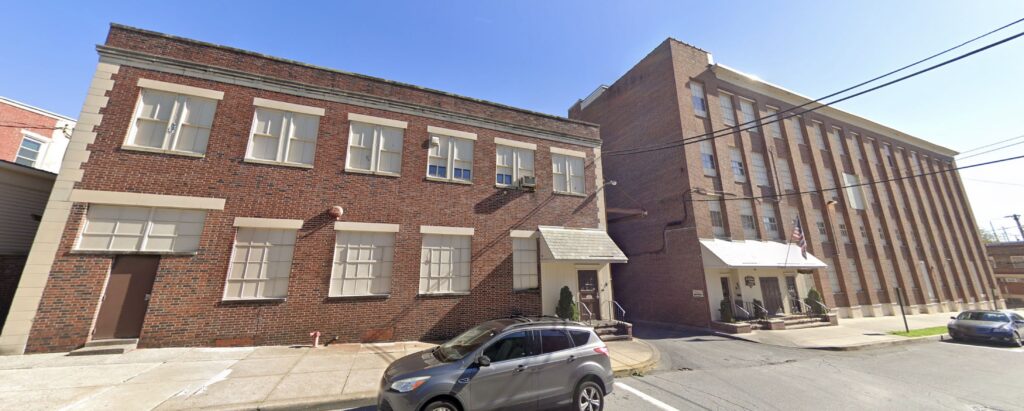
The candy factory has historical significance in addition to its longevity. R.M. Palmer Sr., the founder of the company, patented the process for making those hollow molded chocolate bunnies in 1950. In fact, in 1955 Palmers brought a lawsuit against another local giant candy manufacturer, Ludens Candy, for infringing on that patent. Palmers ended up winning and Ludens was made to pay compensation.
Again, to me these buildings looked like they predated 1958. A few things jumped out to me when observing these structures in street view. One being that the building destroyed had the same decorative corner stone as the 156 Penn ave structure. Initial reports had indicated that 156 Penn Avenue moved four feet off its foundation by the power of the blast. If true, that makes it structurally compromised and I assume it will need to be razed as a result.
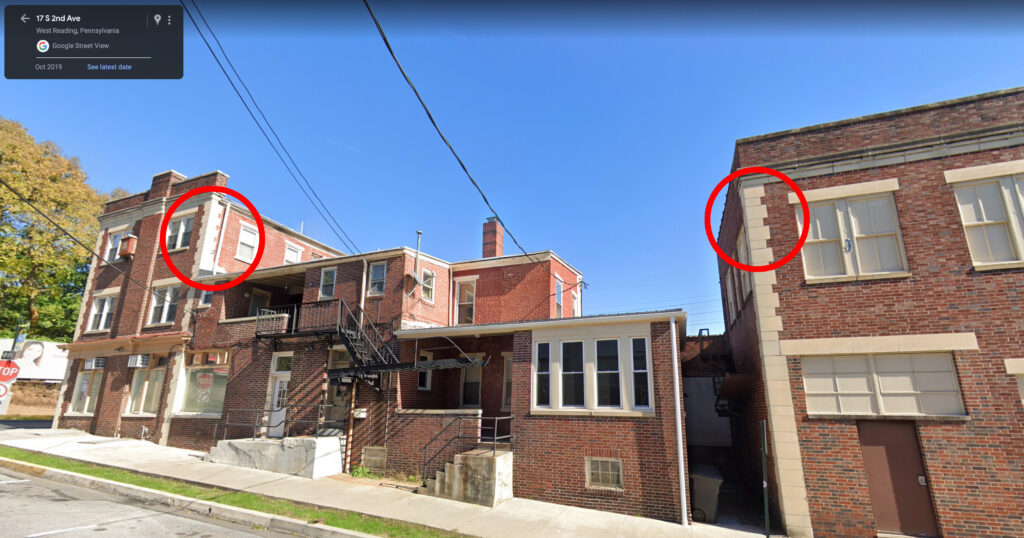
So what’s their story? How old are they?
My first step – even before diving into deeds – was to look at some old aerial photos to confirm their pre-Palmers existence. This 1931 Hagley digital archives image shows all of them vividly in the same form they existed in before the explosion .
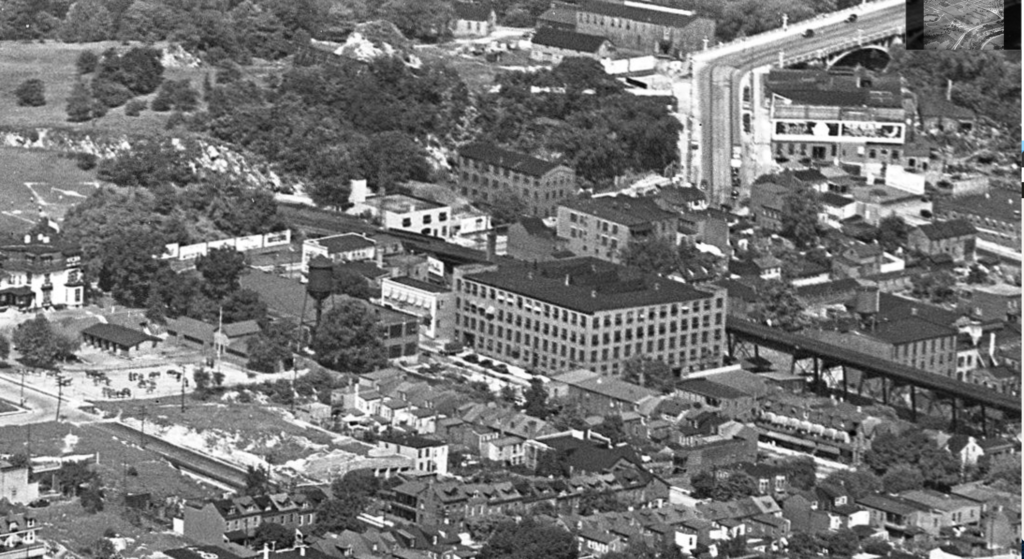
For context moving forward – I am going to refer to the structures as Building 1, Building 2 and 156 Penn Avenue.
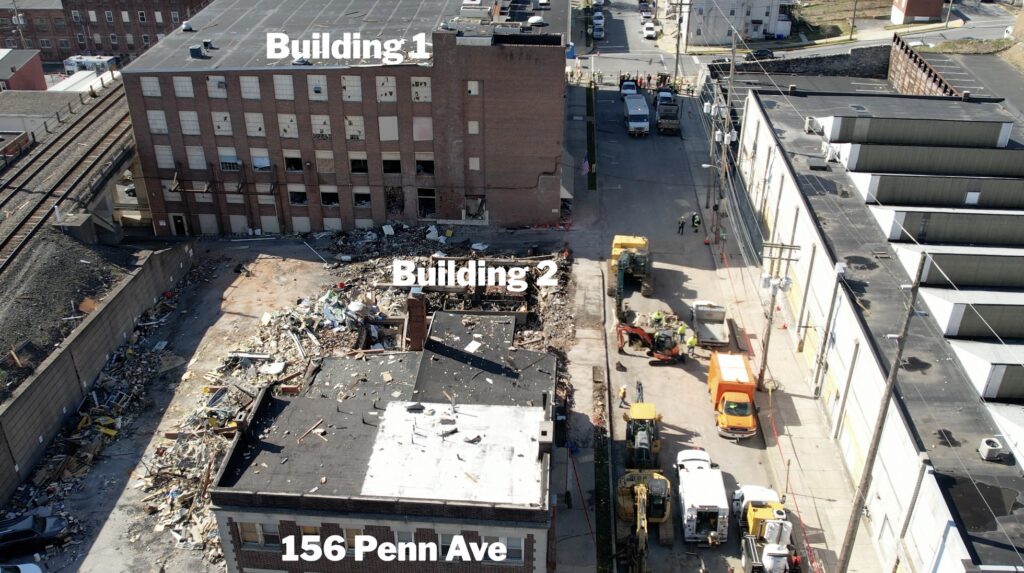
The Narrow Fabrics Company, under the umbrella of Berkshire Industries, sold Building 2 to Palmer in 1958.
The deed previous to this was in 1944 – when a Wyomissing Glazed Paper Company purchased the property. WGPC was founded in 1917 and a January 21st, 1939 Reading Times article mentioned that they made wrappers for Hershey candy bars. This is interesting to note considering that the initial reports were that Building 2 was used to make and package Palmer’s small chocolate eggs.
Building 1 / The Sharp Building
A 1936 lease indicated that WGPC was also renting the building on the northeast corner of 2nd and Franklin; what is now Building 1 of Palmers. However, this lease referred to it as the “Sharp Building”.
The Sharp Building was built in 1915 by a man named William A. Sharp. In an interesting twist he purchased the lot of ground bounded by Franklin, Second, Cherry and the railroad tracks from William Luden. William Luden could not possibly have known that his lot would one day become home to a rivaling confectioner who would sue his company. R.M. Palmer Sr. wouldn’t be born for another 5 years; however William Luden would live just long enough to see Palmer’s founding in 1948. This makes Building 1 / the Sharp Building 108 years old.
An aside: William A. Sharp was a civic leader and head of Sharp Construction company. He built quite an empire buying land and developing it during one of the most industrial periods in Reading’s and America’s history. He also was responsible for residential development most specifically in the areas of Eckert Avenue, Clymer Street and the northern section of Reading.
Building 2 / The Stable
Correct in my original assumption that the buildings once belonged together, the deeds for 156 Penn Ave and Building 2 converge back in 1929.
In 1929 both buildings were sold to a West Reading Title & Trust Co. This banking operation was short lived – it lasted until 1933 when it was absorbed by the Reading National Bank and Trust Co. The deed transfer to Reading National in 1933 read “all that certain brick store (formerly banking room) and apartment building and the two story brick office and warehouse building”.

While filming the drone footage I spoke with a woman whose family had a business in the basement of the 156 Penn ave property for 3 decades. Her sister confirmed there are two vaults built into the first floor and basement of the building. Readers may have noticed the antiquated Vault Alarm apparatus on the west side of the building – a nearly century old vestige of this institution.

The further back in time I dove the more interesting this building became.
In the 1910 deed to a Lewis Schiffner the structure is described as a three story hotel building and stable.
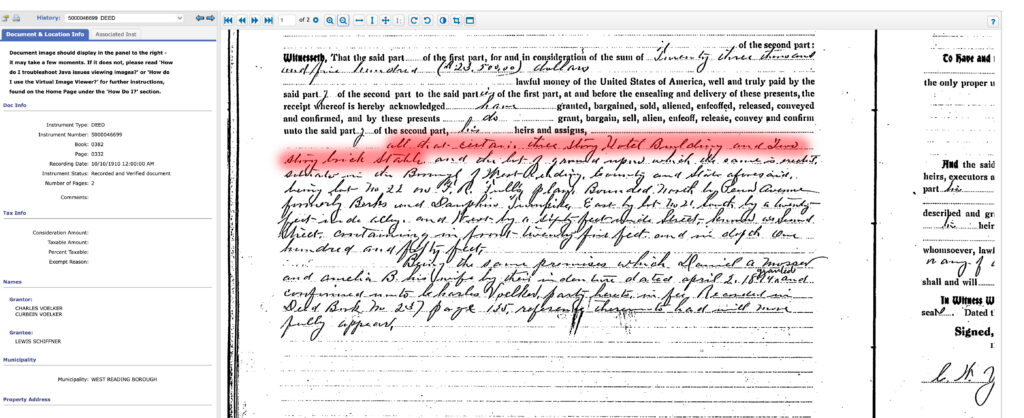
This 1926 Hagley Photo confirms the existence of a different structure behind the “hotel”. The angle isn’t great but the stable is visibly smaller in footprint than Building 2.

That almost certainly proves that the West Reading Title & Trust Co. must have had this building built or completely redone when they purchased this property in 1929.
The next furthest back deed in 1894 which described it as “a three story hotel and lot” is the full stop. This proves Building 2 to be at least 92 years old but possibly up to 113 if the stable was utilized in its construction.
156 Penn Avenue / Hotel
A deed in 1891 described the property as a TWO story hotel and lot. Which means an entire story was added between this and the 1894 deed.
In fact, the first deed I could find for this exact property which indicates it was only lot was the 1873 deed between Frederick Frill – the man who subdivided West Reading – and a man named James Matz – a carpenter and home builder. I was able to confirm through Reading Times newspaper archives that Matz ran his business from this property shortly after purchase and later ran a hotel on this site. The first mention of the hotel was in 1889 when the residents of West Reading legally fought the license because they thought another hotel would attract unsavory behavior. Another interesting side note; a nuisance hotel of our time, Penn View Motel, ended up being built a block away on 3rd and Penn Avenue 76 years later.
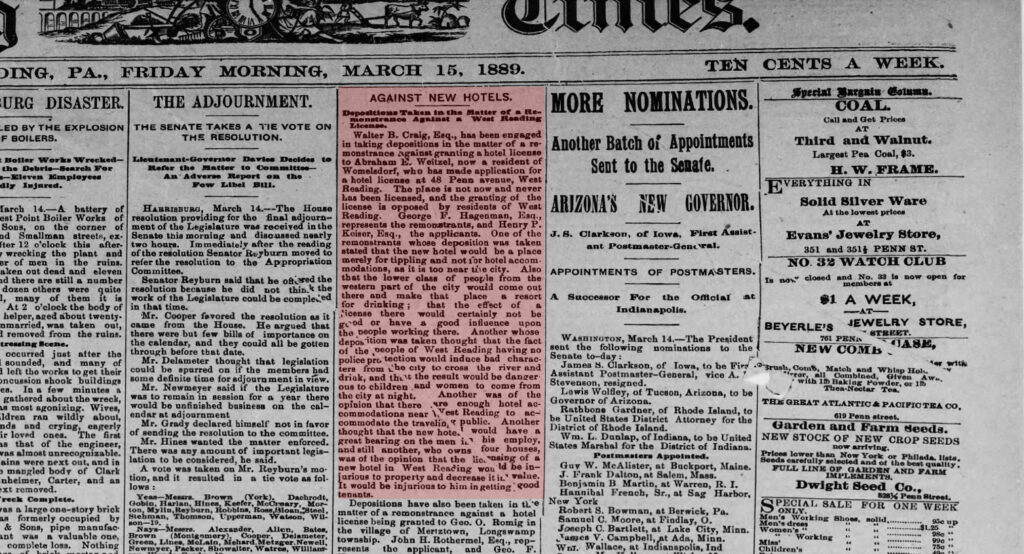
There are sections of 156 Penn Avenue that are two stories. The brick work is patchy indicating many additions and changes over that 150 years. I am no brick expert – but it almost looks to me like the facade was added and the line of brick in the image below shows where a third story addition could have taken place in 1894.
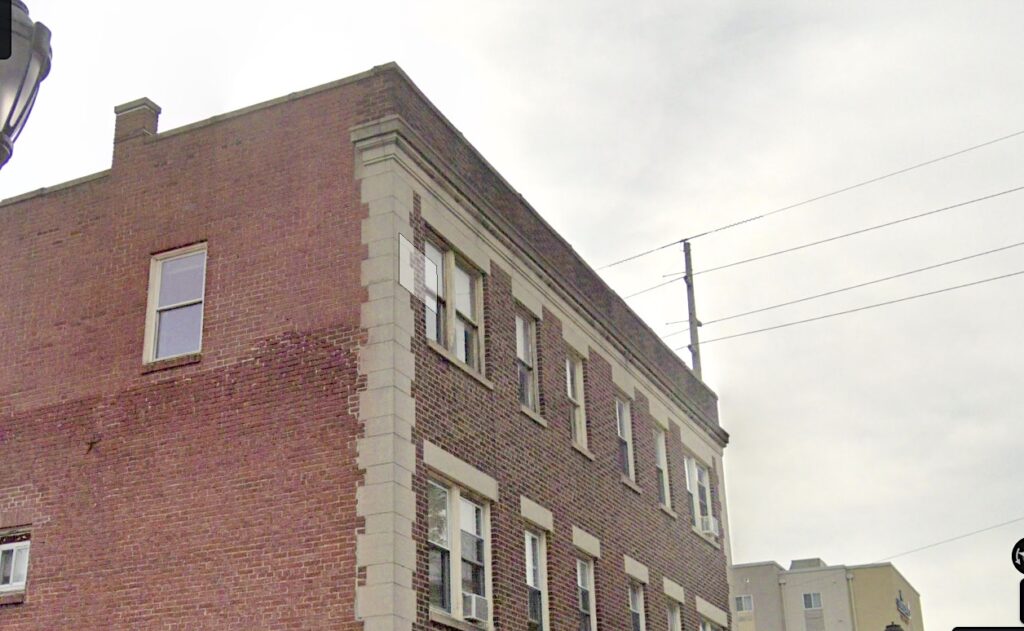
We can determine that at least parts of 156 Penn Ave are roughly 150 years old. It is kind of fascinating to think that this building spent 50 years as a hotel. That is a significant amount of time by our perception yet no one alive today would remember it in that function.
All of the buildings on the block of 2nd Avenue between Penn and Franklin have been condemned, at least for the time being, until they can be proved safe to occupy. Only time will tell if they and the history they represent will be additional casualties to this catastrophic event.
Update: the north facing wall of building 1 will need to be removed and rebuilt as it is in danger of collapsing.
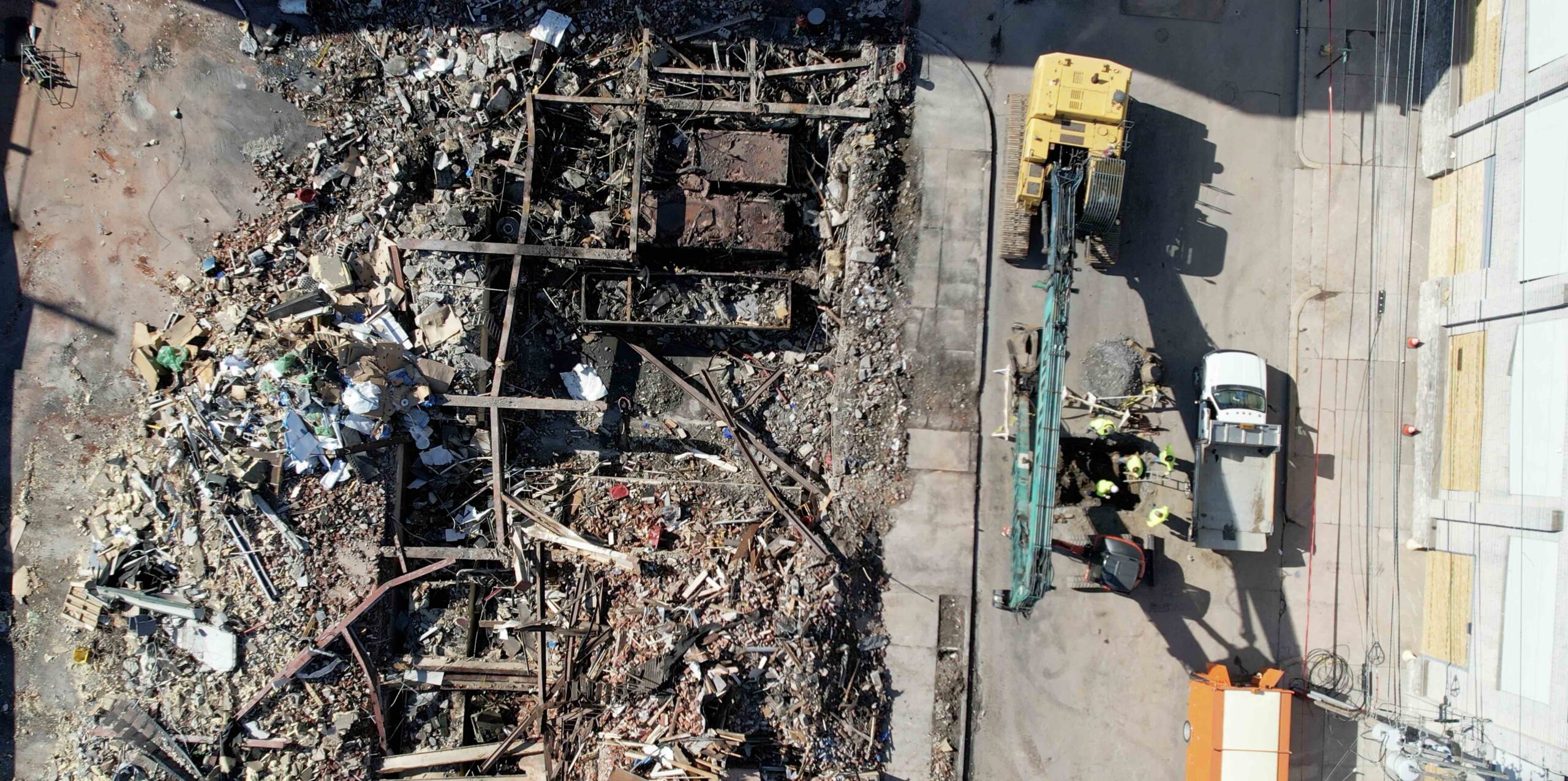
Great article! Thanks for the information.
Great research! Obviously, you did a commendable amount of painstaking work on this.
You’ve done an outstanding job on this article. Thank you for sharing it with us!
Thank you for your excellent research and the many historic photos. I was always a Palmer chocolate “afficiando” and this tragedy breaks my heart.
During the 1950’s when the building was a glazed paper plant we used to go there and the workers would place scraps of glazed paper on the open windows for anyone to have. We would always take what was available although I do not remember doing anything in particular with it.
Thank you for the history of R M Palmer. What a history of a company that I knew little about. I used to work for R M Palmer years ago. Building #1 is where I received an application and was hired to worked in the newer building R M Palmer in Wyomissing.
I used to live in West Reading (on Linden Lane, next to the railroad tracks) which is about 2 blocks away from the company. I was wondering how the houses were after the explosion if there was any damage. Our row house would shake while trains were passing by.
When I heard the news about the explosion, (I live in OK) I was shocked with disbelief, because I used to work for the company. I immediately started praying for all of those who were involved and surrounding areas.
Thank you for an outstanding job and detailed history of R M Palmer.
In 1957 building one was producing glazed paper, shiny on one side (various colors), plain white on the other. My family lived at the corner of Franklin and Yarnell, one block up the hill. My brother and I used to walk by and look in the ground floor windows. The workers handed us paper scraps that we would take home and draw on or make paper airplanes. Yes, they did make the paper for Hershey bar wrappers.